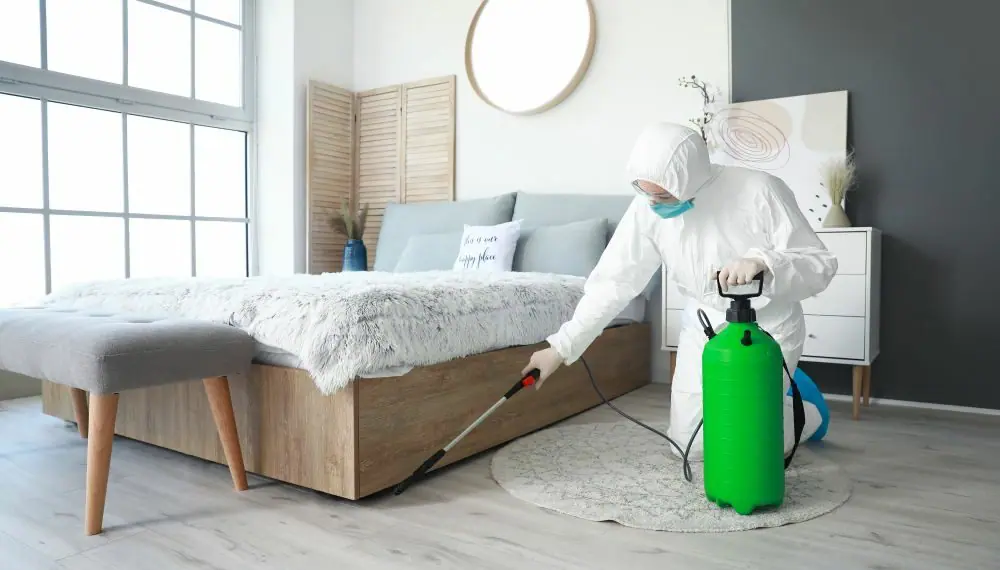How to Monitor Hotel Garbage Areas for Pests Effectively
Share
In the hospitality industry, maintaining a pristine environment is crucial, not only for the satisfaction and comfort of guests but also for ensuring health and safety standards. One of the most overlooked areas that require vigilant monitoring is the garbage disposal area. Understanding how to monitor hotel garbage areas for pests can save management from potential infestations that could lead to dire consequences for both reputation and operation.
Pests such as rodents, insects, and other vermin are particularly attracted to garbage areas due to the abundance of food waste and favorable living conditions. Regular monitoring and strategic control measures are essential to keeping these unwanted guests at bay. Let's delve into the essential strategies and tools involved in monitoring these critical areas effectively.

Understanding the Importance of Monitoring Garbage Areas
Hotel garbage areas are hotspots for pest activity. The constant flow of food waste and organic materials creates a breeding ground for pests. Ignoring these areas can lead to infestations that can quickly spread to other parts of the hotel, causing significant damage and posing health risks.
Effective pest monitoring involves a combination of regular inspections, implementing preventive measures, and using technological tools to detect early signs of infestation. It's not just about reacting to visible pest problems; proactive monitoring can prevent them from occurring in the first place.
Key Pest Monitoring Techniques and Tools
Several techniques and tools can be employed to monitor hotel garbage areas effectively. Here are some of the most effective methods:
Regular Inspections
Conducting regular inspections is the most basic yet effective method to monitor pest activity. Staff should be trained to look for signs of pests such as droppings, nests, and damage to garbage bins. Regular inspections can help identify potential problem areas before they escalate.
Integrated Pest Management (IPM)
Adopting an Integrated Pest Management (IPM) approach is highly recommended for hotels. IPM combines biological, cultural, physical, and chemical tools to minimize pest risks. It focuses on long-term prevention and control, making it a sustainable solution for pest management in hotel garbage areas. More insights into IPM can be found at Orkin.
Technological Solutions
Technological advancements have introduced innovative solutions for pest monitoring. Tools like noise-free rodent traps and digital monitoring systems can provide real-time data on pest activity. For instance, the use of noise-free rodent traps can be an effective way to discreetly manage rodent problems without disturbing guests.
Sanitation and Waste Management
Maintaining high standards of sanitation and proper waste management practices are crucial in deterring pests. Ensuring that garbage bins are sealed and regularly cleaned can minimize the attraction for pests. Additionally, using pest-proof containers and storing waste in a manner that limits access can significantly reduce pest problems.
Implementing a Pest Monitoring Plan
To effectively manage and monitor pests in hotel garbage areas, a comprehensive plan should be in place. This involves:
- Setting up a routine inspection schedule to identify early signs of pest activity.
- Training staff on pest identification and reporting procedures.
- Implementing IPM strategies tailored to the specific needs of the hotel.
- Utilizing technology to enhance monitoring capabilities.
- Ensuring proper sanitation and waste management practices are followed consistently.
Case Study: Successful Pest Monitoring in Hotels
Many hotels have successfully implemented pest monitoring plans that have drastically reduced pest incidents. For example, a leading hotel chain in downtown New York adopted a rigorous monitoring plan that included regular inspections, IPM practices, and the use of digital monitoring systems. The result was a significant decrease in pest sightings and an improved reputation among guests.
For more information on specific strategies that hotels can implement, check out this informative post on monitoring pests in outdoor spaces.
Conclusion
Monitoring hotel garbage areas for pests is a crucial component of maintaining a clean and safe environment for guests. By implementing regular inspections, adopting IPM strategies, utilizing technological tools, and ensuring proper sanitation, hotels can effectively manage and prevent pest problems. Remember, proactive monitoring is key to staying ahead of potential infestations and safeguarding your hotel's reputation.

FAQs
Q1: What are the most common pests found in hotel garbage areas?
A1: The most common pests found in hotel garbage areas include rodents (such as mice and rats), cockroaches, flies, and ants. These pests are attracted to food waste and can quickly become a problem if not monitored effectively.
Q2: How can technology aid in pest monitoring?
A2: Technology can aid in pest monitoring through the use of digital monitoring systems and noise-free traps that provide real-time data on pest activity. These tools can help detect pests early and allow for timely intervention.
Q3: Why is Integrated Pest Management (IPM) important for hotels?
A3: Integrated Pest Management (IPM) is important for hotels because it offers a comprehensive approach to pest control that focuses on long-term prevention and sustainable practices. By combining various control methods, IPM reduces the reliance on chemical treatments and minimizes the impact on the environment.
